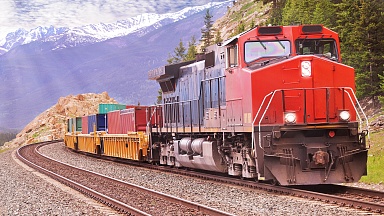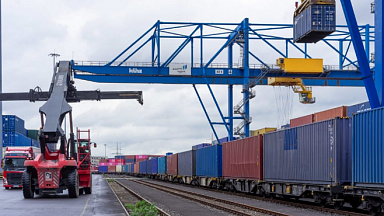On 9 December 2020 the European Commission presented its Sustainable and Smart Mobility Strategy with an action plan of 82 initiatives for the years 2021-2024. It laid the foundation for how the EU transport system can achieve its green and digital transformation. As outlined in the European Green Deal, the transport sector needs to achieve a 90% cut in emissions by 2050. The EU Commission expects that rail freight will double by 2050 and that a fully operational and multimodal Trans-European Transport Network for sustainable and smart transport will have been implemented by then (Sustainable and Smart Mobility Strategy — putting European transport on track for the future, 2020).
Our analysis confirmed that rail freight was the only mode of transport that managed to reduce carbon emission between 1990 and 2020 by more than 60%, at a comparable overall transport volume. Emission from road cargo increased by about 25% along with an increase of total volume of 65%. In other words, the rail sector achieved an absolute reduction of carbon emission by 60% compared to only 25% for road cargo. The most effective way to reduce carbon emissions in the EU transport market until 2030 will be a collective effort to shift more cargo to the railways as emission free heavy trucks will not be introduced in large numbers before the end of this decade. Hence, the vision «30 by 2030» aiming to boost rail freight’s modal share to 30% should guide the way to give rail freight absolute priority both in competing with road cargo, and also within the rail sector to drive down carbon emissions of the transport sector in the fastest possible way.
The ten measures that stem from our market research, stakeholder consultations, and expert discussions are aimed at railways, infrastructure managers and to regulators and competition authorities: • Railways, especially challengers, need to further invest in expanding their asset base, implementing new technology, and continue efficiency improvements and maintaining high customer service levels. • Infrastructure managers need to focus on accelerating TEN-T implementation, debottlenecking international corridors (including critical network nodes and access to major ports / industrial and distribution zones), deploying fast and smart digitization, improving planning and international coordination of construction works (including acceptable diversion routes), and improving internationally coordinated capacity planning and management. • Regulators and competition authorities should focus on securing fair capacity allocation, harmonized and open ERTMS standards, fair competition, and on developing new state aid rules
With a collective and decisive effort to implement the proposed measure, the three stakeholder groups can create the platform for rail freight so succeed in shifting cargo from road to rail, and towards achieving a 30% rail modal by 2030. This will significantly reduce carbon emissions from the transport sector and advance the European Green Deal.


